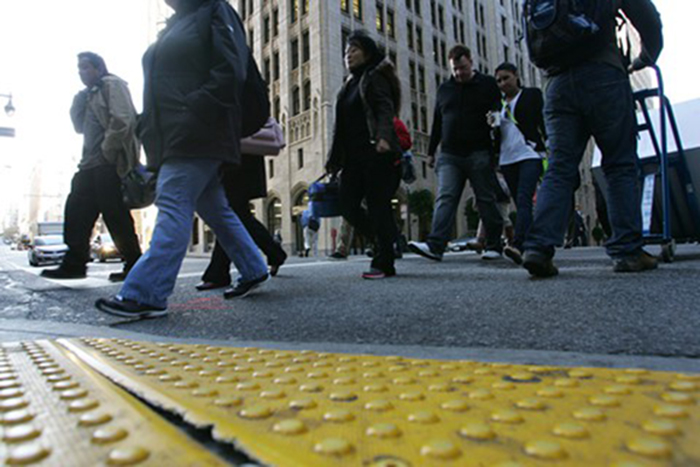The number of injury collisions involving vehicles and pedestrians is on the rise, as San Francisco strives to become the most walkable city in North America.
Last year, according to Police Department data, there was a 12-year high of 948 such injury collisions. From 2000 to 2012, the lowest number was 734 in 2009 – but the figure has increased annually since then.
In the past dozen years, the leading collision causes have been when pedestrians had the right of way and when pedestrian were in violation, both in the triple digits. In 2012, the 398 pedestrian right-of-way collisions accounted for 43 percent of total incidents, while the 306 pedestrian violations made up 33 percent of collisions.
Late last year, the Police Department rolled out a campaign focusing on the leading causes of collisions – driving at unsafe speeds, red-light violations, failure to yield to pedestrians at crosswalks, failure to yield while making a left or U-turn, and failure to halt at a stop sign. All of those focus on the behavior drivers, noted Police Cmdr. Mikail Ali, who works with the San Francisco Municipal Transportation Agency.
“It’s almost a dirty word to even speak about enforcing laws against pedestrians,” Ali said. “We don’t have cops on every street, so we have to strategically focus on the five that typically impact vehicles. But pedestrians are a significant issue as well.”
However, Walk San Francisco Executive Director Nicole Schneider disagreed, saying pedestrians are determined to be at fault and drivers escape blame all too often.
While collision injuries are increasing, vehicle-pedestrian fatalities have remained flat.
Police data show that pedestrian fatalities dropped from 32 in 2000 to lows of 13 in 2008 and 2010 and rose slightly to 17 and 16 in 2011 and 2012, respectively. Schneider noted that the state does not attribute a death to the collision if it happens after 30 days. One death occurred after 30 days in 2012, according to Ali.
Though the official numbers for this year have not been released, Schneider said her organization has tracked 12 so far, including most recently the death of a 62-year-old man hit by a car in Potrero Hill on Saturday night.
Ali agreed that anecdotally, the fatalities are down from 2012.
“We are moving in the right direction and hopefully will do better than we have done in years past,” he said.
San Francisco’s goal to become North America’s safest walking city is part of its Pedestrian Strategy, which was released in April and calls for a 15 percent reduction in severe and fatal injuries by 2014, 25 percent by 2016 and 50 percent by 2021.
“We haven’t seen a lot of projects hit the ground,” said Schneider, whose organization advised the study for years.
Some $363 million for traffic infrastructure improvements and enforcement measures was identified in the study, but funding could be an issue.
“Pedestrian strategy is one of many categories that is underfunded that has been identified as a priority by the task force,” Chava Kronenberg, an analyst at the Controller’s Office, said of Mayor Ed Lee’s 2030 Transportation Task Force.
The Police Department is taking enforcement and education measures to improve pedestrian safety, but Ali said results require a joint effort from the public.
“If pedestrians, bicyclists and motorists focused more on our responsibilities and less on our perceived rights, then we would have a significant decrease in collisions in our city,” he said.
Source: SF Examiner
October 29, 2013
By Jessica Kwong, photo by Mike Koozmin
http://www.sfexaminer.com/sanfrancisco/pedestrian-vehicle-injury-collisions-rising-in-san-francisco/Content?oid=2614262











